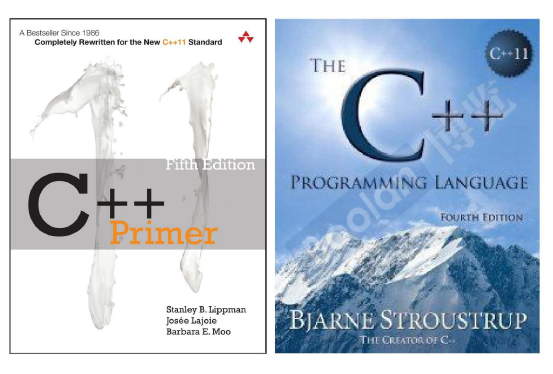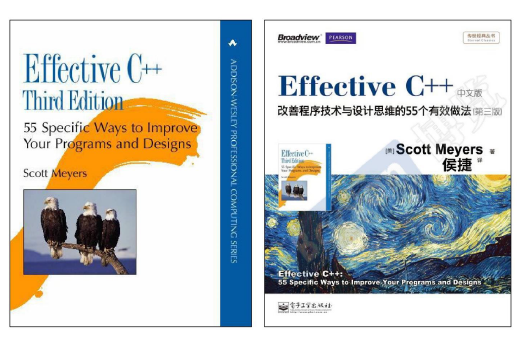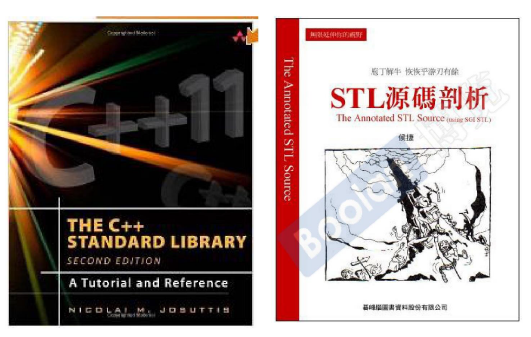侯捷老师C++大系之C++面向对象开发:(一)不带指针的类:Complex复数类的实现过程
一、笔记
1.C++编程简介



2.头文件与类的声明
防卫式声明
#ifndef __COMPLEX__
#define __COMPLEX__
……
#endif
头文件的布局
模板简介
template<typename T>
3.构造函数
inline函数:函数若在class body内定义完成,便自动成为inline候选人
访问级别:
public private
被外部访问的函数设为public
构造函数
complex (doble r=0,double i=0)
:re(r),im(i)
{ }
先初始化,后赋值
这种写法效率高
构造函数可以有很多个——重载
单例模式,构造函数放在private里,不允许外部创
4.参数传递与返回值
在函数后头加const
double real () const{return re;}
参数传递: pass by value vs. pass by reference(to const)
参数尽量传引用,如果不希望对方改加const
内化成习惯
返回值传递:return by value vs. return by reference(to const)
返回值也尽量传引用
friend(友元)
自由取得friend的private成员
相同class的各个objects互为friends(友元)
class body外的各种定义
什么情况可以传和返回引用,什么情况不可以:
两个参数相加,得到一个新的结果时不能传引用
5.操作符重载与临时对象
操作符重载之一,成员函数
操作符重载之二,非成员函数
临时对象
重载<<
二、代码
1.complex.h
#ifndef __MYCOMPLEX__
#define __MYCOMPLEX__ class complex;
complex&
__doapl (complex* ths, const complex& r);
complex&
__doami (complex* ths, const complex& r);
complex&
__doaml (complex* ths, const complex& r); class complex
{
public:
complex (double r = , double i = ): re (r), im (i) { }
complex& operator += (const complex&);
complex& operator -= (const complex&);
complex& operator *= (const complex&);
complex& operator /= (const complex&);
double real () const { return re; }
double imag () const { return im; }
private:
double re, im; friend complex& __doapl (complex *, const complex&);
friend complex& __doami (complex *, const complex&);
friend complex& __doaml (complex *, const complex&);
}; inline complex&
__doapl (complex* ths, const complex& r)
{
ths->re += r.re;
ths->im += r.im;
return *ths;
} inline complex&
complex::operator += (const complex& r)
{
return __doapl (this, r);
} inline complex&
__doami (complex* ths, const complex& r)
{
ths->re -= r.re;
ths->im -= r.im;
return *ths;
} inline complex&
complex::operator -= (const complex& r)
{
return __doami (this, r);
} inline complex&
__doaml (complex* ths, const complex& r)
{
double f = ths->re * r.re - ths->im * r.im;
ths->im = ths->re * r.im + ths->im * r.re;
ths->re = f;
return *ths;
} inline complex&
complex::operator *= (const complex& r)
{
return __doaml (this, r);
} inline double
imag (const complex& x)
{
return x.imag ();
} inline double
real (const complex& x)
{
return x.real ();
} inline complex
operator + (const complex& x, const complex& y)
{
return complex (real (x) + real (y), imag (x) + imag (y));
} inline complex
operator + (const complex& x, double y)
{
return complex (real (x) + y, imag (x));
} inline complex
operator + (double x, const complex& y)
{
return complex (x + real (y), imag (y));
} inline complex
operator - (const complex& x, const complex& y)
{
return complex (real (x) - real (y), imag (x) - imag (y));
} inline complex
operator - (const complex& x, double y)
{
return complex (real (x) - y, imag (x));
} inline complex
operator - (double x, const complex& y)
{
return complex (x - real (y), - imag (y));
} inline complex
operator * (const complex& x, const complex& y)
{
return complex (real (x) * real (y) - imag (x) * imag (y),
real (x) * imag (y) + imag (x) * real (y));
} inline complex
operator * (const complex& x, double y)
{
return complex (real (x) * y, imag (x) * y);
} inline complex
operator * (double x, const complex& y)
{
return complex (x * real (y), x * imag (y));
} complex
operator / (const complex& x, double y)
{
return complex (real (x) / y, imag (x) / y);
} inline complex
operator + (const complex& x)
{
return x;
} inline complex
operator - (const complex& x)
{
return complex (-real (x), -imag (x));
} inline bool
operator == (const complex& x, const complex& y)
{
return real (x) == real (y) && imag (x) == imag (y);
} inline bool
operator == (const complex& x, double y)
{
return real (x) == y && imag (x) == ;
} inline bool
operator == (double x, const complex& y)
{
return x == real (y) && imag (y) == ;
} inline bool
operator != (const complex& x, const complex& y)
{
return real (x) != real (y) || imag (x) != imag (y);
} inline bool
operator != (const complex& x, double y)
{
return real (x) != y || imag (x) != ;
} inline bool
operator != (double x, const complex& y)
{
return x != real (y) || imag (y) != ;
} #include <cmath> inline complex
polar (double r, double t)
{
return complex (r * cos (t), r * sin (t));
} inline complex
conj (const complex& x)
{
return complex (real (x), -imag (x));
} inline double
norm (const complex& x)
{
return real (x) * real (x) + imag (x) * imag (x);
} #endif //__MYCOMPLEX__
2.complex_test.cpp
#include <iostream>
#include "complex.h" using namespace std; ostream&
operator << (ostream& os, const complex& x)
{
return os << '(' << real (x) << ',' << imag (x) << ')';
} int main()
{
complex c1(, );
complex c2(, ); cout << c1 << endl;
cout << c2 << endl; cout << c1+c2 << endl;
cout << c1-c2 << endl;
cout << c1*c2 << endl;
cout << c1 / << endl; cout << conj(c1) << endl;
cout << norm(c1) << endl;
cout << polar(,) << endl; cout << (c1 += c2) << endl; cout << (c1 == c2) << endl;
cout << (c1 != c2) << endl;
cout << +c2 << endl;
cout << -c2 << endl; cout << (c2 - ) << endl;
cout << ( + c2) << endl; return ;
}
侯捷老师C++大系之C++面向对象开发:(一)不带指针的类:Complex复数类的实现过程的更多相关文章
- <软件架构与设计模式>侯捷老师关于Adapter类在STL中的深入解析和模式探讨
题外话:侯捷老师难得一年就来上九堂课就要会宝岛,特此留念签名赠语及合照以自勉. 学海无涯,为勤是岸 <正文开始> 昨天晚上连上了3个小时的大课探究单单讲了Adapter一个类,幸运的是本 ...
- 侯捷 c++面向对象程序设计
基础知识 基于对象:Object Based 面对的是单一class的设计. 面向对象:Object Oriented 面对的是多重classes的设计,涉及到类和类之间的关系. 课程中设计到两种不同 ...
- 侯捷STL学习(12)--STL相关内容hash+tuple
layout: post title: 侯捷STL学习(12) date: 2017-08-01 tag: 侯捷STL --- 第四讲 STL相关的内容 Hash Function 将hash函数封装 ...
- 侯捷《C++面向对象开发》——动手实现自己的复数类
前言 最近在看侯捷的一套课程<C++面向对象开发>,刚看完第一节introduction之后就被疯狂圈粉.感觉侯捷所提及所重视的部分也正是我一知半解的知识盲区,我之前也写过一些C++面向对 ...
- C++标准库(体系结构与内核分析)(侯捷第二讲)
一.OOP和GP的区别(video7) OOP:面向对象编程(Object-Oriented programming) GP:泛化编程(Generic programming) 对于OOP来说,我们要 ...
- 快笑死,侯捷研究MFC的原因
与我研究VCL框架代码的原因一模一样:就是N年了,感觉自己还是没有掌握Delphi,惊叹别人各种各样神奇的效果,自己却不会,更不知为什么这样做,离高手的距离还有十万八千里.而且编程的时候,就像侯捷说的 ...
- 侯捷C++ Type traits(类型萃取
泛型編程編出來的代碼,適用於任何「吻合某種條件限制」的資料型別.這已成為撰寫可復用代碼時的一個重要選擇.然而,總有一些時候,泛型不夠好 — 有時候是因為不同的型別差距過大,難以產生一致的泛化實作版本. ...
- 评侯捷的<深入浅出MFC>和李久进的<MFC深入浅出>
侯捷的<深入浅出mfc>相信大家都已经很熟悉了,论坛上也有很多介绍,这里我就不多说了. 而李久进的<mfc深入浅出>,听说的人可能就少得多.原因听说是这本书当时没有怎么宣传,而 ...
- 侯捷STL学习(一)
开始跟着<STL源码剖析>的作者侯捷真人视频,学习STL,了解STL背后的真实故事! 视频链接:侯捷STL 还有很大其他视频需要的留言 第一节:STL版本和重要资源 STL和标准库的区别 ...
随机推荐
- ASP.NET Core 中文文档 第四章 MVC(2.3)格式化响应数据
原文:Formatting Response Data 作者:Steve Smith 翻译:刘怡(AlexLEWIS) 校对:许登洋(Seay) ASP.NET Core MVC 内建支持对相应数据( ...
- IdentityServer4 ASP.NET Core的OpenID Connect OAuth 2.0框架学习保护API
IdentityServer4 ASP.NET Core的OpenID Connect OAuth 2.0框架学习之保护API. 使用IdentityServer4 来实现使用客户端凭据保护ASP.N ...
- Map集合
1:Map (1)将键映射到值的对象. 一个映射不能包含重复的键:每个键最多只能映射到一个值. 键值对的方式存在 (2)Map和Collection的区别? A:Map 存储的是键值对形式的元素,键唯 ...
- python之最强王者(11)——异常(exception)
1.Python 异常处理 python提供了两个非常重要的功能来处理python程序在运行中出现的异常和错误.你可以使用该功能来调试python程序. 异常处理: 本站Python教程会具体介绍. ...
- H5 本地存储一
localStorage(本地存储),可以长期存储数据,没有时间限制,一天,一年,两年甚至更长,数据都可以使用.sessionStorage(会话存储),只有在浏览器被关闭之前使用,创建另一个页面时同 ...
- JS+CSS3人物奔跑动画
查看效果:http://hovertree.com/texiao/jquery/58/ 效果图: 代码: <!DOCTYPE html> <html> <head> ...
- js实现无缝循环滚动
<!doctype html> <html lang="en"> <head> <meta charset="UTF-8&quo ...
- arcgis api for js入门开发系列一arcgis api离线部署
在我的GIS之家QQ群里,很多都是arcgis api for js开发的新手,他们一般都是GIS专业的学生,或者从计算机专业刚刚转向来的giser,他们难免会遇到各种webgis开发的简单问题,由于 ...
- UITableView点击每个Cell,Cell的子内容的收放
关于点击TableviewCell的子内容收放问题,拿到它的第一个思路就是, 方法一: 运用UITableview本身的代理来处理相应的展开收起: 1.代理:- (void)tableView:(UI ...
- 【Swift】iOS UICollectionView 计算 Cell 大小的陷阱
前言 API 不熟悉导致的问题,想当然的去理解果然会出问题,这里记录一下 UICollectionView 使用问题. 声明 欢迎转载,但请保留文章原始出处:) 博客园:http://www.cn ...
